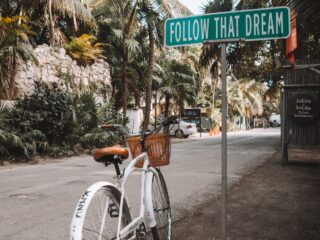
And, then there are the not so little changes. Language is, of course, the big one here. Even countries which speak the same language often do so in very different ways. Slang terms and word usage can vary vastly, even in English speaking countries. And, again, you need to keep on top here if you want a smooth journey.
As if that weren’t enough, the rules of the road also vary a great deal from country to country. Some countries have strict speed limits while others have none. Some roads have no markings. Even the meaning of beeping your horn varies from place to place. And, of course; some countries, especially in Europe, require you to drive on the left-hand side of the road.
If you’re brave enough to tackle driving in another country, there’s a chance you’ve already considered this. If not, read on to find out the right way to drive on the ‘wrong’ side of the road.
Get used to your car before leaving your parking space
If you’ve shipped a car abroad with you, this point won’t apply. But, if you’re renting a car in your destination, it’s essential you take some time to get acquainted with it before heading off. Because, the cars are the other way around in these destinations, too. Though the basic controls will be the same, things feel very different when everything’s flipped. Take at least some time to sit with the engine off and practice controlling each switch. Things like your indicator and your handbrake and especially essential here. After all, you’ll have enough to think about on the road as it is, without being unable to find what you need. So, remember that practice makes perfect. Don’t even turn the key in that ignition until you feel confident.
Plan your route ahead of time
It’s also essential to plan your route ahead of time. The last thing you need is to take your eyes off the road to check the sat nav. Instead, take the time to learn the route before you start driving. During that adjustment period, you need your full concentration on the road. Even a second of distraction could leave you veering into the wrong lane, or missing a signal from a car in front. Heck, for that first ride, it’ll be all you can do to stop from crashing into vehicles as they drive past you. So, make 100% sure you know where to turn and so on. All the better for keeping yourself and other cars safe.
Take a passenger
If possible, it’s worth taking a passenger, especially for those first few drives. There are a few reasons for this. For one, having someone with you ensures they can direct you if you do forget the route. That way, you can find your way without having to look away from the road. What’s more, having a passenger with you, especially one who knows the roads, is useful protection. As well as giving guidance, they can act as your witness. After all, if you were involved in an accident, the blame would automatically land on your shoulders. But, by having a witness, you can protect yourself if you aren’t at fault, and rest easy that you’d have a decent case for an injury lawyer to clear your name. After all, accidents happen all the time. Just because you’re new to these roads doesn’t mean you deserve the brunt of that burden.
Practice on quiet roads
It should go without saying that you should practice on quiet roads, but we’re going to say it anyway. As mentioned, you may find it difficult to cope with passing cars at first. Each time, it’ll feel a lot like they’re about to crash into you. And, that can be horrendous to deal with if you haven’t already adjusted to your controls. Instead, drive country routes and quiet areas until you feel competent. Then, you can hit the busier areas if you feel up to it.






